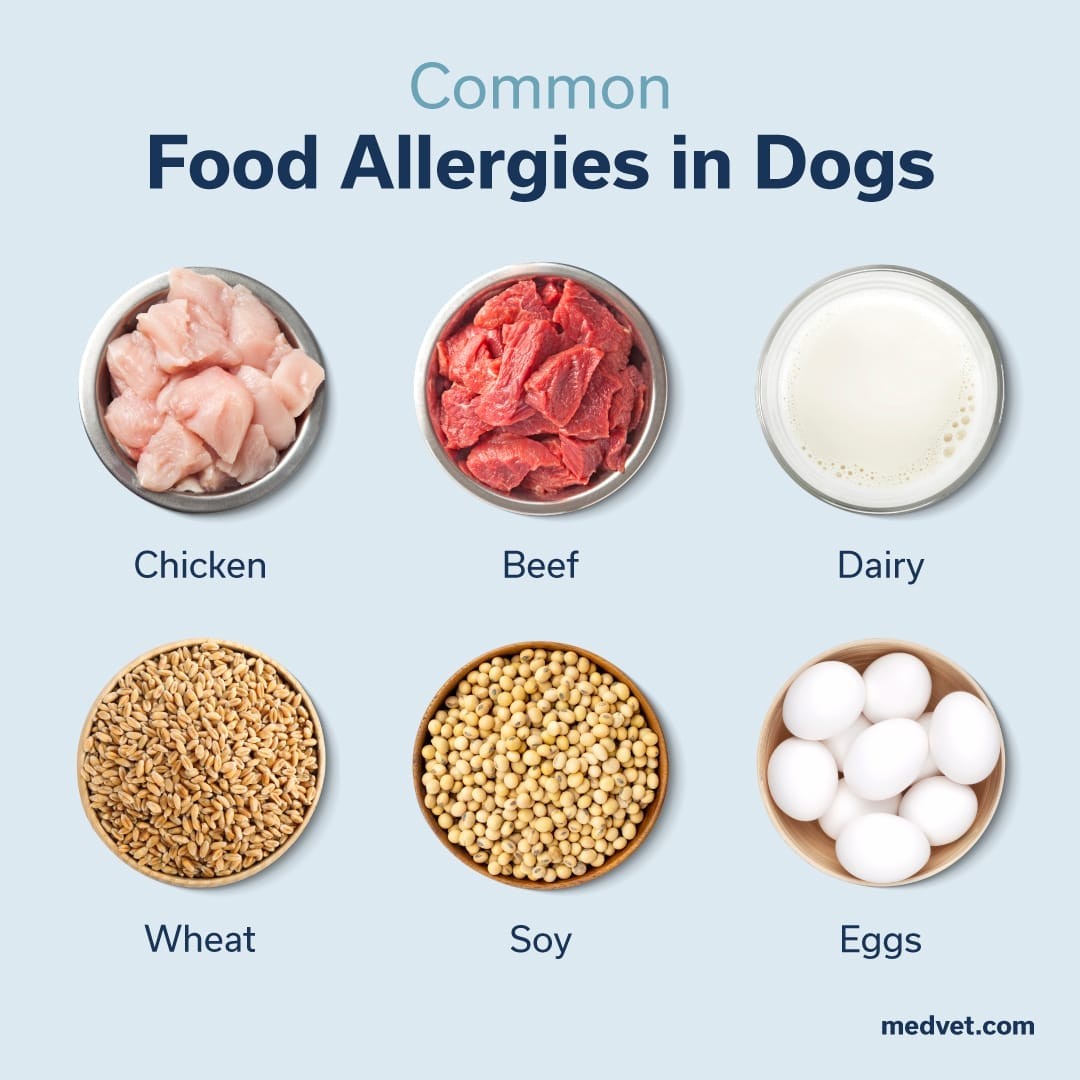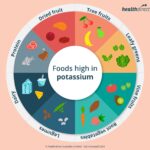Even if your dog has been eating the same food for a long time, they can still develop food allergies. This is because the immune system needs time to build up antibodies to certain ingredients. If you suspect your furry friend has a food allergy, it’s essential to recognize the signs and seek veterinary guidance.
What are Food Allergies in Dogs?
Food allergies in dogs, scientifically known as Cutaneous Adverse Food Reactions (CAFR), occur when the dog’s immune system mistakenly identifies a food ingredient, usually a protein, as a threat. This triggers an overreaction, leading to various symptoms. Food allergies are less common than environmental allergies like pollen, dust mites, and flea allergies.
Signs of Food Allergies in Dogs
Food allergies can manifest differently in each dog. Common signs include:
- Persistent Itching: This is one of the most common symptoms. Dogs may constantly scratch, lick, or chew at their skin.
- Skin Infections: Food allergies can weaken the skin’s barrier function, making dogs more susceptible to bacterial and yeast infections. Look for redness, inflammation, and a foul odor.
- Ear Infections: Recurring ear infections, especially if accompanied by skin issues, can be a sign of food allergies.
- Gastrointestinal Issues: Vomiting, diarrhea, and excessive gas can also indicate a food allergy.
These signs can overlap with other allergies, so it’s crucial to consult a veterinarian for an accurate diagnosis.
Common Food Allergies in Dogs
While dogs can develop allergies to any food ingredient, some are more common than others. The most frequent culprits include:
- Chicken
- Beef
- Dairy
- Wheat
- Soy
- Eggs
Dogs can be allergic to a single ingredient or multiple ones. It’s essential to identify the specific allergen to manage the condition effectively.
How Can I Tell If My Dog Has Food Allergies?
The most reliable way to diagnose a food allergy in dogs is through an elimination diet trial. This involves feeding your dog a special diet that contains ingredients they have never been exposed to before. The trial should last at least eight weeks and must be supervised by a veterinarian to ensure accurate results. During the trial, you must eliminate all other foods, treats, and supplements.
There are two main types of elimination diets:
- Novel Protein Diets: These diets contain a protein source that your dog has never eaten before, such as venison, rabbit, or kangaroo.
- Hydrolyzed Protein Diets: These diets contain proteins that have been broken down into smaller pieces, making them less likely to trigger an allergic reaction.
Over-the-counter diets are often not suitable for elimination trials due to potential ingredient contamination. Prescription diets are generally recommended and are available in dry and canned forms. In some cases, your veterinarian may recommend a home-cooked diet.
Commercial allergy tests such as blood, saliva and hair tests are available. However, these tests are unreliable and not recommended for diagnosing food allergies in dogs.
What Happens During a Food Trial for Dogs?
Your veterinarian or a veterinary dermatologist will guide you through the food trial process. It’s crucial to follow their instructions carefully.
Here are some key tips for a successful food trial:
- Clean Food Bowls: Before starting the new diet, thoroughly clean all food bowls with soap and water to remove any traces of the old food.
- Separate Feeding: During feeding time, separate all household pets to prevent cross-contamination. Pick up the bowls after feeding and do not allow the dog on the trial to eat from other pets’ bowls. Consider transitioning all household pets to the trial diet.
- Gradual Transition: Gradually introduce the new diet over 3-7 days to avoid digestive upset. Mix small amounts of the new diet with the old diet, gradually increasing the amount of the new diet. Save a small amount of the original diet in case you need to reintroduce it.
- Strictly No Treats: Absolutely no treats, flavored medications, or supplements are allowed during the trial. Use topical or non-flavored heartworm and flea preventatives. Consult your veterinarian for a list of safe fruits and vegetables, but avoid grapes, raisins, and corn.
- Medication Administration: Do not administer medications in food or pill pockets. Consult your vet before giving any medications or supplements during the trial.
Food trials typically last for eight weeks. It takes about four weeks for the immune system to adjust to the new diet, and it may take up to eight weeks to see a noticeable improvement in your dog’s symptoms.
Following the trial, your veterinarian may recommend a “rechallenge” phase to confirm the allergy. This involves reintroducing the original diet to see if symptoms return. If confirmed, a lifelong, prescribed diet will be required.
In some cases, a veterinary dermatologist may recommend reintroducing single ingredients, one at a time, to pinpoint the specific allergen. Each ingredient will be fed for 10-14 days while monitoring for any flare-ups.
Treating Food Allergies in Dogs
Once the allergen has been identified, avoid all foods, treats, and supplements containing that allergen. Be cautious with “limited-ingredient” diets, as they may still contain traces of the allergen due to cross-contamination during manufacturing.
In addition to dietary changes, your veterinarian may prescribe medications to manage your dog’s symptoms. These can include antihistamines, allergy medications like Apoquel® or Cytopoint®, or steroids. Omega-3 fatty acid supplements can also help support skin health and reduce inflammation.
Regular follow-up appointments with your veterinarian are crucial to monitor your dog’s progress and make any necessary dietary adjustments.

